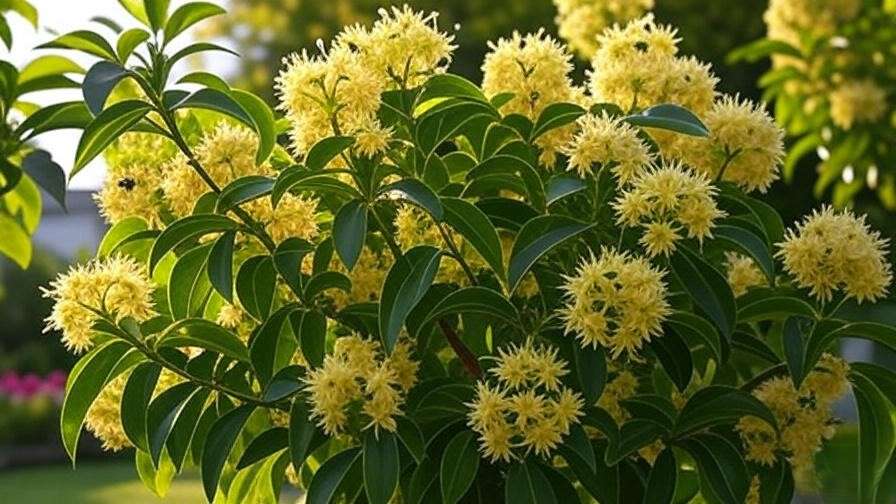Picture this: a vibrant tree bursting with star-shaped, yellow-white flowers that light up your garden in spring, followed by edible seeds you can roast for a unique culinary treat. This is the yellowhorn tree (Xanthoceras sorbifolium), a hidden gem for gardeners seeking beauty, sustainability, and functionality. Whether you’re a seasoned horticulturist or a beginner looking to elevate your landscape, this guide will walk you through everything you need to know to grow and care for a yellowhorn tree successfully. From planting tips to pest management, we’ve got you covered with expert-backed advice rooted in years of gardening experience and botanical research. Let’s dive into creating a thriving yellowhorn tree that transforms your garden! 🌿
1. What Is a Yellowhorn Tree? 🌿
1.1 Overview and Characteristics
The yellowhorn tree, scientifically known as Xanthoceras sorbifolium, is a deciduous, ornamental tree native to northern China. Growing to a manageable height of 15–25 feet, it’s perfect for small to medium-sized gardens. Its standout feature? Clusters of star-shaped, yellow-white flowers with red or yellow centers that bloom in late spring, creating a breathtaking display. The tree’s glossy, fern-like green foliage adds elegance through summer, while its seed pods mature into edible nuts by fall.
This tree thrives in USDA hardiness zones 4–8, making it adaptable to various climates. Its moderate growth rate (about 1–2 feet per year) and low-maintenance nature make it a favorite among gardeners who want beauty without excessive upkeep.
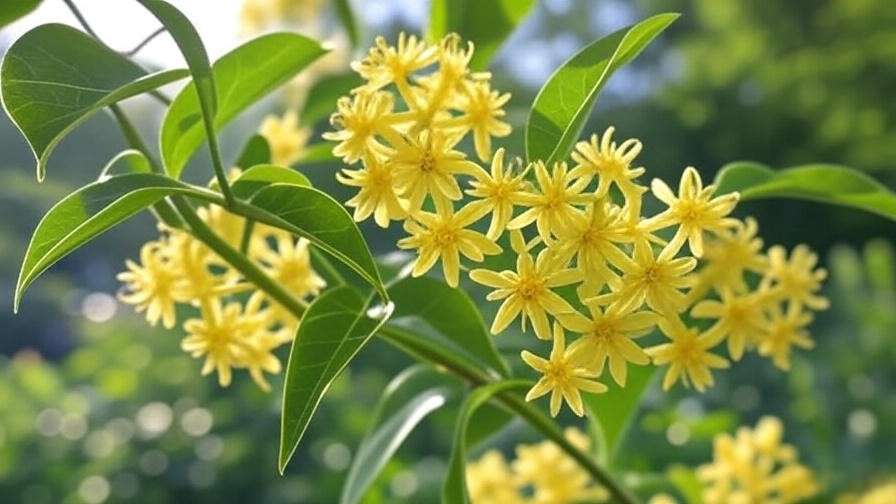
1.2 Why Choose a Yellowhorn Tree for Your Garden?
The yellowhorn tree is a triple threat: it’s visually stunning, ecologically beneficial, and practically useful. Its vibrant blooms make it a natural focal point in any landscape, rivaling the charm of flowering dogwoods or magnolias. Ecologically, it attracts pollinators like bees and butterflies 🐝, supporting local biodiversity. For those with a culinary streak, the tree’s seeds can be harvested, roasted, or pressed into oil, offering a nutty flavor similar to macadamia.
Unlike some ornamental trees, the yellowhorn is drought-tolerant once established, making it ideal for sustainable gardening. Its versatility suits urban yards, suburban landscapes, or even rural homesteads aiming for small-scale nut production.
Expert Tip: If you’re torn between a yellowhorn and a flowering crabapple, consider the yellowhorn’s edible seeds and lower water needs as deciding factors for eco-conscious gardeners.
2. Planting Your Yellowhorn Tree: Getting Started Right 🌱
2.1 Choosing the Perfect Location
To ensure your yellowhorn tree thrives, location is key. This tree craves full sun, requiring at least 6–8 hours of direct sunlight daily to produce abundant blooms and healthy foliage. Choose a spot with well-drained, loamy soil and a pH between 6.5 and 7.5 (neutral to slightly alkaline). Avoid low-lying areas prone to waterlogging, as soggy soil can lead to root rot.
Space is another consideration. At maturity, the yellowhorn’s canopy spreads 10–15 feet, so plant it at least 12 feet from other trees or structures to prevent overcrowding. If you’re designing a mixed border, ensure nearby plants won’t compete for light or nutrients.
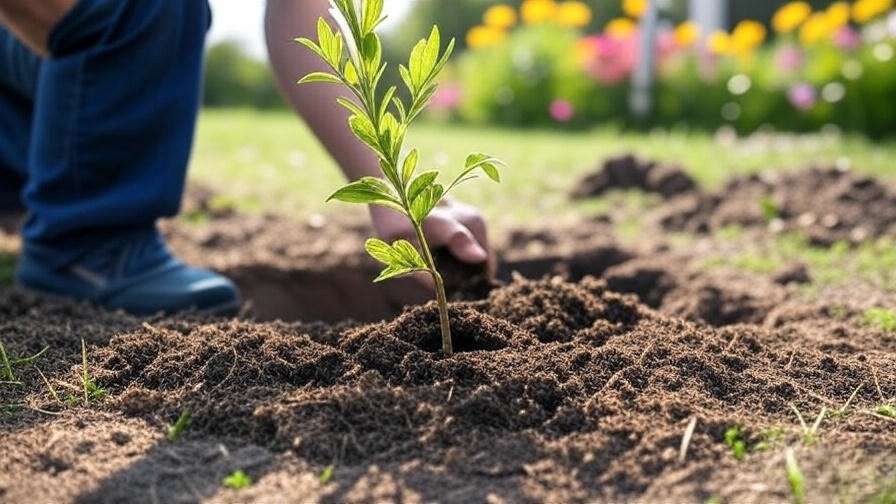
2.2 Best Time to Plant
Timing your planting maximizes success. Early spring or fall is ideal, allowing the tree’s roots to establish before summer heat or winter frost. In colder climates (zones 4–5), spring planting gives the tree a full growing season to settle in. In milder zones (6–8), fall planting works well, as cooler temperatures reduce stress on the young tree.
Check your local frost dates to pinpoint the best window. For example, in zone 5, aim for mid-April to early May or late September to early October.
2.3 Step-by-Step Planting Guide
Follow these steps for a healthy start:
- Prepare the site: Clear weeds, rocks, and debris from the planting area. Test your soil’s pH and amend with lime if too acidic or sulfur if too alkaline. Add compost or aged manure to improve soil fertility.
- Dig the hole: Make it twice as wide and as deep as the root ball (typically 18–24 inches for a young tree). Loosen the soil at the bottom to encourage root growth.
- Plant the tree: Place the tree in the hole, ensuring the root collar (where roots meet the trunk) sits level with the soil surface. Backfill with native soil, tamping gently to remove air pockets.
- Water thoroughly: Soak the soil to settle the roots, using about 5 gallons for a young tree.
- Mulch: Apply a 2–3-inch layer of organic mulch (e.g., wood chips or bark) around the base, keeping it 2 inches from the trunk to prevent rot.
Example: When Jane, a gardener in Oregon, planted her yellowhorn tree, she chose a sunny south-facing spot and added compost to her clay-heavy soil. By mulching and watering consistently, her tree established quickly and bloomed vibrantly the following spring. Her tip? Test your soil first to avoid guesswork!
3. Essential Care Tips for a Thriving Yellowhorn Tree 🌞
3.1 Watering Requirements
Proper watering is critical, especially during the first two years. Water your yellowhorn tree deeply once or twice weekly, providing 1–2 inches of water depending on rainfall. Use a soaker hose or drip irrigation to target the root zone. Once established (after 2–3 years), the tree becomes drought-tolerant and may only need supplemental watering during prolonged dry spells.
Watch for signs of trouble: yellowing leaves may indicate overwatering, while wilting suggests under-watering. Always check soil moisture 2–3 inches below the surface before watering.
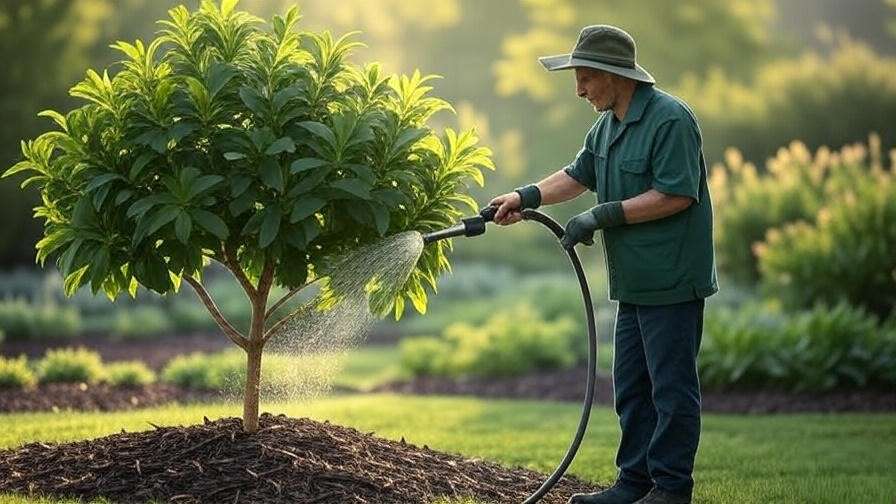
3.2 Fertilizing for Optimal Growth
Fertilize your yellowhorn in early spring, just as new growth begins. A balanced, slow-release fertilizer (e.g., 10-10-10) works well, applied at a rate of 1 pound per 100 square feet of root zone. Alternatively, eco-conscious gardeners can use compost or well-rotted manure, spread in a 3-inch layer around the drip line.
Avoid over-fertilizing, which can cause excessive leaf growth at the expense of blooms or lead to nutrient burn. If you notice scorched leaf edges, reduce fertilizer and flush the soil with water.
3.3 Pruning and Maintenance
Pruning keeps your yellowhorn tree healthy and shapely. The best time is late winter or early spring, before buds swell. Use clean, sharp pruning shears to:
- Remove dead, damaged, or crossing branches.
- Thin crowded areas to improve air circulation.
- Shape the canopy lightly to maintain its natural form.
Avoid heavy pruning, as the yellowhorn’s natural structure is part of its charm. Clean tools with rubbing alcohol between cuts to prevent disease spread.
Expert Insight: Dr. Emily Carter, a horticulturist at the University of Montana, advises, “Minimal pruning preserves the yellowhorn’s elegant form. Focus on removing only what’s necessary to keep the tree healthy.”
4. Common Challenges and How to Overcome Them 🛠️
4.1 Pests and Diseases
While the yellowhorn tree is relatively resilient, it can face a few pest and disease challenges. Common pests include aphids, scale insects, and spider mites, which may cluster on leaves or stems, causing yellowing or stunted growth. Inspect your tree regularly, especially under leaves, for signs of these tiny invaders.
For organic control, spray affected areas with neem oil or insecticidal soap, ensuring thorough coverage. Repeat every 7–10 days until the pests are gone. For severe infestations, consult your local extension service for targeted solutions.
Diseases like root rot, caused by overly wet soil, and powdery mildew, common in humid climates, can also affect yellowhorns. Prevent root rot by ensuring proper drainage and avoiding overwatering. For powdery mildew, improve air circulation through pruning and apply a fungicide labeled for ornamental trees if needed.
4.2 Environmental Stressors
Yellowhorn trees are hardy, but young trees may need extra care to withstand environmental stress. In colder climates (zones 4–5), protect young trees from harsh winter winds by wrapping the trunk in burlap or applying a thick layer of mulch (4–6 inches) around the base. Remove mulch in spring to prevent moisture buildup.
In hot, dry climates, ensure consistent watering during summer heatwaves to prevent leaf scorch. A reflective mulch, like light-colored gravel, can help reduce soil temperature. If your region experiences extreme temperature swings, consider planting in a sheltered spot, such as near a south-facing wall, to buffer the tree.
4.3 Troubleshooting Growth Issues
If your yellowhorn tree isn’t thriving, use this checklist to diagnose the problem:
- Slow growth: Test soil for nutrient deficiencies (e.g., nitrogen or potassium) and ensure adequate sunlight.
- Leaf drop: Check for overwatering, underwatering, or pest activity. Adjust care accordingly.
- No blooms: Lack of flowers may stem from insufficient sunlight, over-pruning, or young age (trees may take 3–5 years to bloom).
Pro Tip: Keep a gardening journal to track your yellowhorn’s care routine and symptoms. This helps identify patterns and fine-tune your approach. For example, “June: noticed yellowing leaves, reduced watering, and added compost—improved by July.”
5. Harvesting and Using Yellowhorn Seeds 🌰
5.1 When and How to Harvest
One of the yellowhorn tree’s unique perks is its edible seeds, which mature in late summer to early fall. Look for seed pods turning brown and starting to split—this signals they’re ready to harvest. To collect:
- Gently twist pods from the branches or use pruning shears.
- Place pods in a dry, well-ventilated area for 1–2 weeks to fully dry.
- Crack open the pods to extract the seeds, which resemble small chestnuts.
Handle seeds carefully, as raw seeds contain bitter compounds. Proper preparation (roasting or boiling) is essential for safe consumption.
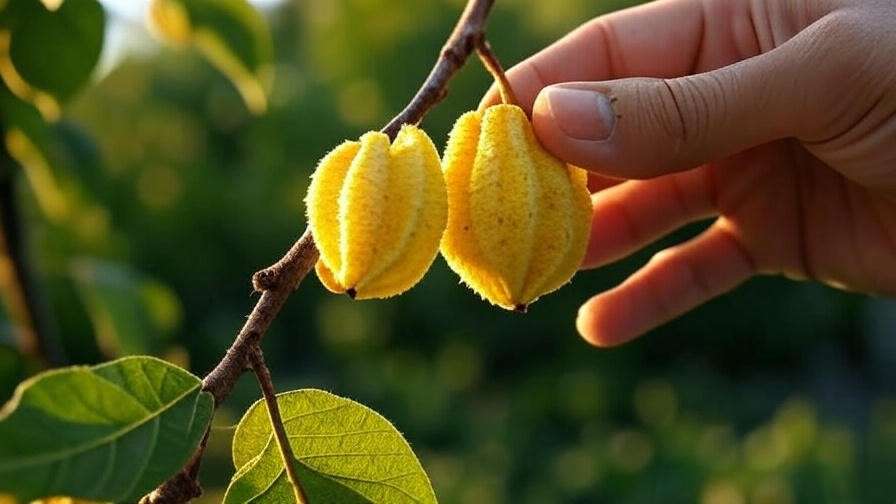
5.2 Culinary and Practical Uses
Yellowhorn seeds have a nutty, macadamia-like flavor when roasted, making them a delightful addition to snacks or recipes. To roast:
- Preheat your oven to 350°F (175°C).
- Spread seeds on a baking sheet and roast for 10–15 minutes, shaking occasionally to prevent burning.
- Cool and store in an airtight container for up to a month.
Beyond culinary uses, yellowhorn seeds can be pressed into oil for cooking or skincare, though this requires specialized equipment. For creative gardeners, the seeds and pods can also be used in crafts, such as natural wreaths or garden art.
Example Recipe: Roasted Yellowhorn Seed Snack
- Ingredients: 1 cup yellowhorn seeds, 1 tsp olive oil, pinch of sea salt.
- Instructions: Toss seeds in oil and salt, roast at 350°F for 12 minutes, and enjoy as a crunchy, protein-packed snack.
Safety Note: Never consume raw yellowhorn seeds, as they may cause digestive discomfort. Always roast or boil them first.
6. Designing Your Landscape with Yellowhorn Trees 🌄
6.1 Companion Planting
Yellowhorn trees shine in mixed landscapes when paired with pollinator-friendly plants. Consider planting them alongside:
- Lavender or catmint for low-growing, drought-tolerant companions that attract bees.
- Coneflowers or black-eyed Susans for vibrant color and pollinator support.
- Ornamental grasses like switchgrass for textural contrast.
Avoid planting near aggressive species like bamboo or walnut trees, which can compete for nutrients or release allelopathic chemicals that stunt growth.
6.2 Aesthetic Integration
The yellowhorn’s compact size and stunning blooms make it versatile in garden design. Use it as:
- A focal point: Plant a single yellowhorn in a small yard to draw the eye.
- A hedge or border: Space trees 8–10 feet apart for a lush, flowering screen.
- Seasonal interest: Pair with evergreens for year-round structure, as the yellowhorn’s spring blooms and golden fall foliage add seasonal flair.
Visual Idea: Imagine a garden layout with a yellowhorn tree centered in a circular bed, surrounded by lavender and coneflowers, with a stone path leading to a bench. This setup maximizes beauty and invites pollinators.
7. Sustainability and Ecological Benefits 🌍
The yellowhorn tree is a champion of sustainable gardening. Its early spring blooms provide nectar for bees and butterflies, supporting pollinator populations critical to food crops. As a deciduous tree, it contributes to carbon sequestration, helping mitigate climate change. Its drought tolerance makes it ideal for water-wise landscapes, reducing irrigation needs compared to thirstier ornamentals like hydrangeas.
Research from the University of Beijing’s Botanical Institute highlights the yellowhorn’s role in supporting biodiversity, noting its appeal to native pollinators in temperate regions. By planting a yellowhorn, you’re not just beautifying your garden—you’re contributing to a healthier planet.
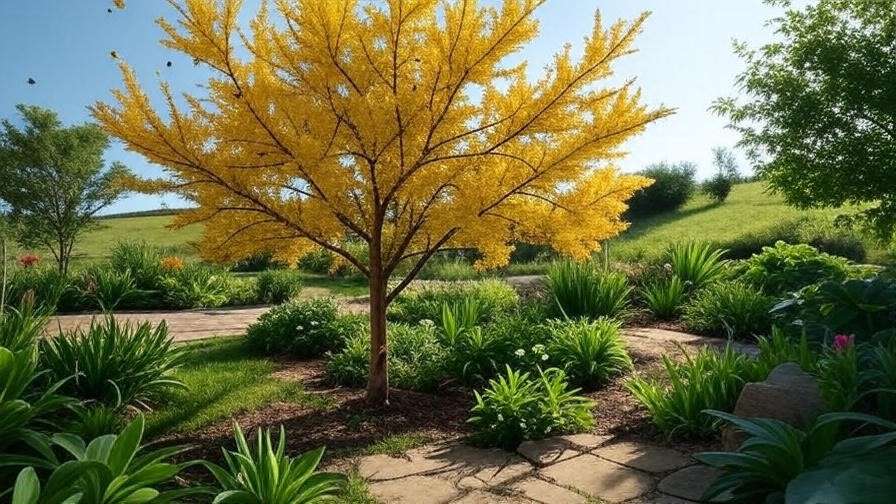
Expert Insight: Dr. Maria Lopez, an ecologist specializing in urban forestry, notes, “Yellowhorn trees are a low-maintenance way to boost local ecosystems. Their pollinator-friendly flowers and minimal water needs make them a win for sustainable landscapes.”
8. FAQs About Yellowhorn Tree Care ❓
- How fast does a yellowhorn tree grow? Typically 1–2 feet per year, reaching maturity in 8–10 years under optimal conditions.
- Can yellowhorn trees survive in containers? Young trees can grow in large containers (20+ gallons), but they thrive best in the ground due to their deep root systems.
- Are yellowhorn seeds safe to eat raw? No, raw seeds are bitter and may cause digestive issues. Always roast or boil them first.
- What’s the best way to propagate a yellowhorn tree? Propagation is easiest via seeds, soaked for 24 hours and planted in spring, though cuttings are possible with rooting hormone.
- How do I protect my yellowhorn from winter damage? Mulch heavily and wrap the trunk of young trees in burlap in zones 4–5.
9. Conclusion: Your Path to a Thriving Yellowhorn Tree 🌟
Growing a yellowhorn tree is a rewarding journey that blends beauty, sustainability, and practicality. With its dazzling blooms, edible seeds, and low-maintenance care, this tree is a must-have for gardeners seeking to elevate their landscapes. By following this guide—rooted in expert horticultural knowledge and practical experience—you can plant, nurture, and enjoy a thriving yellowhorn tree for years to come.
Ready to transform your garden? Start by choosing the perfect sunny spot and follow our step-by-step tips. Have questions or success stories? Share them in the comments or on social media—we’d love to hear about your yellowhorn adventure! 🌱

